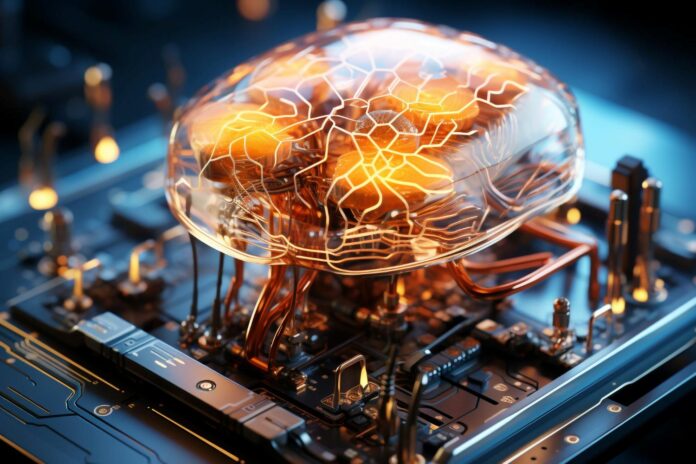Theoretical physicists at Utrecht University, in a groundbreaking collaboration with physicists at Sogang University in South Korea, have successfully built an artificial synapse that works with water and salt. This joint effort offers the first evidence that a system using the same medium as our brains can process complex information, marking a significant milestone in our collective scientific journey.
As mentioned above, the system relies on water and salt. In tests, it exhibits the ability to process intricate information, mirroring the functionality of our brains. The key to this system is a tiny device that measures 150 by 200 micrometers and mimics the synapse.
The newly developed device, known as an iontronic memristor, holds immense potential. It consists of a cone-shaped microchannel filled with a solution of water and salt. After receiving electrical impulses, ions within the liquid migrate through the channel, leading to alterations in ion concentration. This innovative technology could pave the way for a new era in computing.
The channel’s conductivity changes in response to the strength (or duration) of the impulse, reflecting the strengthening or weakening of connections between neurons. The magnitude of the conductance change provides an observable depiction of the input signal.

Furthermore, the length of the channel impacts the duration required for concentration changes to dissipate. This raises the prospect of customizing channels to store and process data for different amounts of time, similar to the synaptic systems in human brains.
Tim Kamsma, a PhD candidate at the Institute for Theoretical Physics and the Mathematical Institute of Utrecht University, reflects on the significance of the research. He states, “The fundamental nature of the research, highlighting that iontronic neuromorphic computing, while experiencing rapid growth, is still in its infancy. The envisioned outcome is a computer system vastly superior in efficiency and energy consumption compared to present-day technology. This research underscores the importance of our work in pushing the boundaries of scientific knowledge.”
“It represents a crucial advancement toward computers that are not only capable of mimicking the communication patterns of the human brain but also utilize the same medium,” he asserts. Perhaps this will ultimately pave the way for computing systems that replicate the extraordinary capabilities of the human brain more faithfully.”
Journal Reference:
- Tim M. Kamsma et al., Brain-inspired computing with fluidic intronic nanochannels, Proceedings of the National Academy of Sciences (2024). DOI: 10.1073/pnas.2320242121
